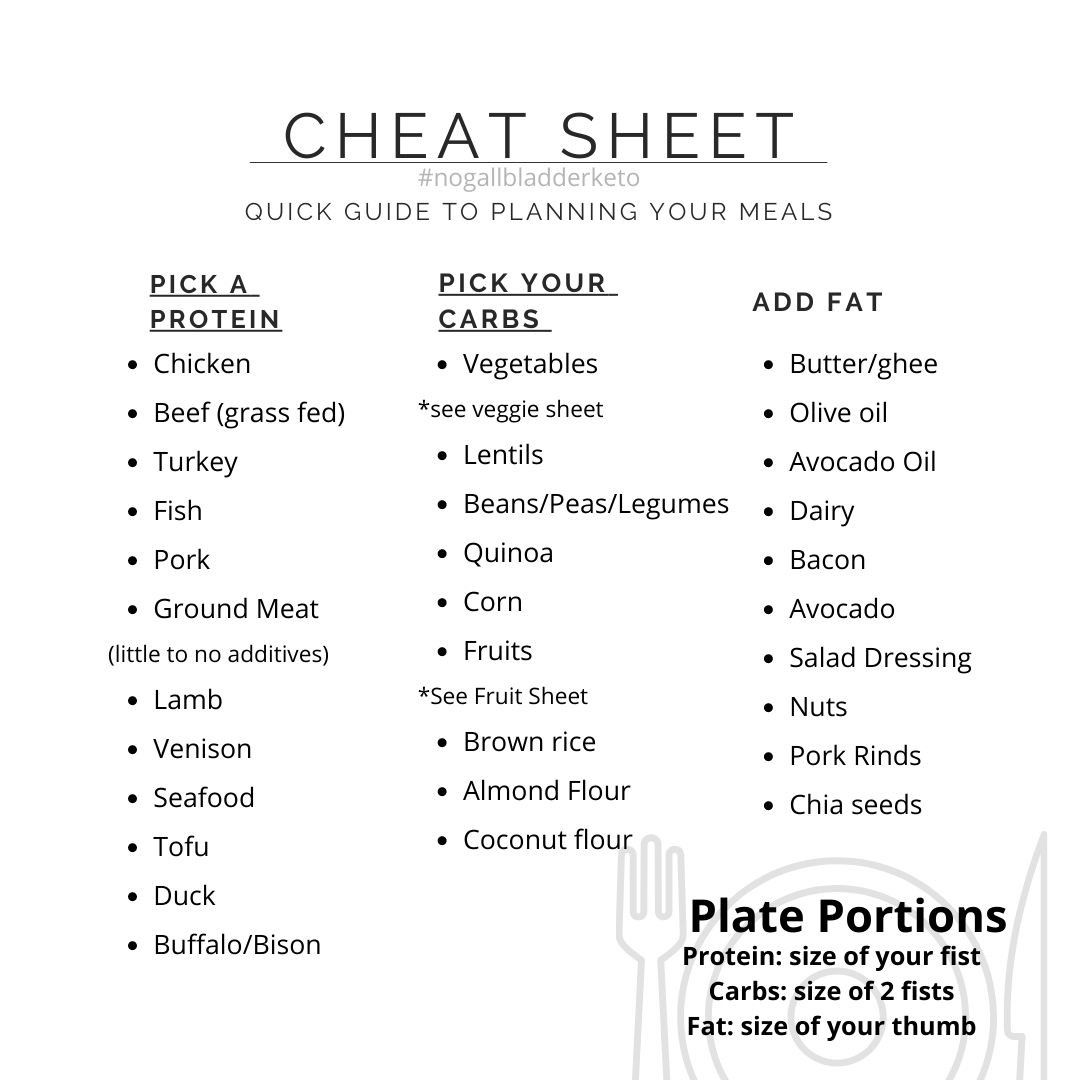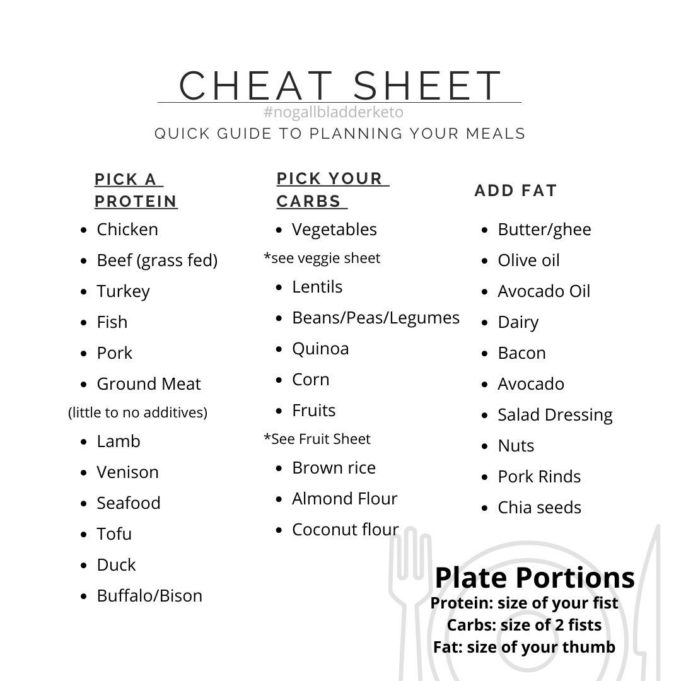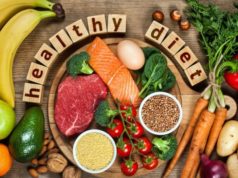Best diet without gallbladder? You bet! Life after gallbladder removal can feel like a culinary obstacle course, but fear not, dear reader, because we’re about to navigate this post-surgical terrain with a smile (and maybe a sprinkle of digestive humor).
Gone is your gallbladder, but your appetite needn’t be! This guide will unpack the secrets of a gallbladder-friendly diet, revealing the delicious truth about what you can (and can’t) eat after surgery. Get ready to embark on a journey of flavorful discovery, where we’ll demystify the dos and don’ts of post-cholecystectomy eating.
Imagine a world where your body is a symphony of digestion, and each bite you take plays a harmonious role in your overall well-being. That’s the kind of digestive harmony we’re aiming for with this guide. We’ll explore the impact of gallbladder removal on digestion, delve into the secrets of a gallbladder-friendly diet, and even reveal a few delicious meal plans to keep your taste buds singing.
So, buckle up, food lovers, and let’s embark on this culinary adventure together!
Understanding Gallbladder Removal and Diet: Best Diet Without Gallbladder
Imagine your gallbladder as a tiny, but mighty, organ that helps you digest fatty foods. It stores bile, a digestive juice produced by your liver, which helps break down fats. But sometimes, this little organ can cause trouble, leading to the need for removal.
This is called a cholecystectomy. After gallbladder removal, your body has to adjust to a new way of digesting fats, which can lead to some changes in your diet.
Impact of Gallbladder Removal on Digestion
Without your gallbladder, bile flows directly from your liver into your small intestine. This can lead to a few changes in how you digest food, particularly fats. Here’s how:* Bile Flow:Your gallbladder used to act like a reservoir for bile, releasing it when needed.
Now, bile flows continuously into your small intestine, potentially leading to diarrhea, especially after eating fatty foods.
Fat Digestion
Living without a gallbladder can be a bit of a digestive dance, but don’t worry, you’re not alone! The key is to avoid fatty foods that your gallbladder used to help break down. To get a better idea of how much fat you can handle, check out the recommended dietary allowance for fat.
Once you know your limits, you can create a personalized plan that’s both delicious and gallbladder-friendly!
Your body might have trouble digesting fats efficiently. This can lead to indigestion, gas, bloating, and discomfort after meals.
Nutrient Absorption
Without your gallbladder, you might have difficulty absorbing certain fat-soluble vitamins like A, D, E, and K.
Common Digestive Issues After Gallbladder Removal
You might experience some common digestive issues after gallbladder removal, including:* Diarrhea:The continuous flow of bile can lead to loose stools, especially after meals high in fat.
Indigestion
You might feel a burning sensation in your stomach or chest, especially after eating fatty foods.
Gas and Bloating
You might experience increased gas and bloating, particularly after meals.
Pain
You might feel abdominal pain, especially after eating fatty foods.
Nausea and Vomiting
You might feel nauseous or vomit, especially after eating fatty foods.
Dietary Recommendations for Managing Post-Cholecystectomy Symptoms
To manage post-cholecystectomy symptoms, it’s important to make some dietary adjustments. Here are some tips:* Reduce Fat Intake:Limit your intake of saturated and unhealthy fats, found in fried foods, fatty meats, butter, and full-fat dairy products.
Choose Lean Proteins
Navigating the world of “best diets” can be a minefield, especially when you’re missing a gallbladder. But don’t fret! There are plenty of delicious and healthy options out there that won’t leave you feeling like a sad, deflated balloon. Just remember, the best diet is the one you can actually stick to, so check out this great article on how not to diet for some helpful tips.
And hey, maybe ditch the word “diet” altogether and just focus on eating wholesome, flavorful food that makes you feel good. Your gallbladder, or lack thereof, will thank you!
Opt for lean meats, poultry without skin, fish, and plant-based protein sources like beans, lentils, and tofu.
Increase Fiber
Living without a gallbladder can feel like a game of dietary roulette, but fear not! The key is to go easy on fatty foods and focus on lighter options. One great strategy is to embrace the principles of what’s mediterranean diet , with its emphasis on fruits, vegetables, whole grains, and healthy fats.
This approach not only helps with digestion but also offers a delicious and vibrant way to nourish your body after your gallbladder says “sayanora.”
Include plenty of fiber in your diet, found in fruits, vegetables, whole grains, and legumes. Fiber helps regulate digestion and prevent constipation.
Eat Smaller, More Frequent Meals
Instead of large meals, eat smaller, more frequent meals throughout the day to reduce the burden on your digestive system.
Stay Hydrated
Drink plenty of water throughout the day to help with digestion and prevent constipation.
Avoid Triggers
Pay attention to foods that trigger your symptoms and avoid them.
Talk to Your Doctor
If you’re experiencing significant digestive issues, talk to your doctor. They can help you create a personalized dietary plan.
Dietary Principles for a Gallbladder-Friendly Diet

After gallbladder removal, your body’s ability to digest fats changes, making it crucial to adjust your diet to accommodate these changes. A gallbladder-friendly diet focuses on nourishing your body while promoting comfortable digestion.
Key Nutrients to Focus On
After gallbladder removal, certain nutrients become particularly important for maintaining overall health and supporting digestion. These include:
- Protein: Protein helps repair tissues, build muscle, and maintain a healthy immune system. Good sources include lean meats, poultry, fish, beans, lentils, tofu, and eggs.
- Complex Carbohydrates: Complex carbohydrates provide sustained energy and are easier to digest than simple sugars. Focus on whole grains, fruits, vegetables, and legumes.
- Vitamins and Minerals: A balanced intake of vitamins and minerals is essential for overall health. Ensure you’re getting enough vitamin D, calcium, iron, and B vitamins.
Importance of Fat Intake
While fat is essential for energy, hormone production, and nutrient absorption, it’s important to choose healthy fats and moderate your intake.
- Healthy Fats: Include monounsaturated and polyunsaturated fats in your diet, which can help lower cholesterol and reduce inflammation. Good sources include avocados, olive oil, nuts, seeds, fatty fish like salmon, and flaxseed oil.
- Limiting Saturated and Trans Fats: These types of fats can increase cholesterol levels and contribute to heart disease. Avoid processed foods, fried foods, and fatty meats.
Role of Fiber in a Gallbladder-Friendly Diet
Fiber is an essential nutrient that aids digestion and promotes regularity. However, after gallbladder removal, it’s crucial to increase fiber intake gradually to avoid digestive discomfort.
- Gradual Increase: Start with small amounts of fiber-rich foods and gradually increase your intake over time.
- Soluble Fiber: Soluble fiber dissolves in water and forms a gel-like substance in the digestive tract, which can help slow down digestion and make it easier for your body to absorb nutrients. Good sources include oats, beans, lentils, apples, and pears.
- Insoluble Fiber: Insoluble fiber doesn’t dissolve in water and adds bulk to your stool, promoting regularity. Good sources include whole grains, vegetables, and nuts.
Meal Planning Strategies
Meal planning is a vital component of managing your diet after gallbladder removal. It allows you to make informed choices about what you eat and helps you avoid triggering foods.
Gallbladder-Friendly Meal Options
Here are some examples of gallbladder-friendly breakfast, lunch, and dinner options:
Breakfast
- Oatmeal with berries and a sprinkle of nuts
- Scrambled eggs with spinach and whole-wheat toast
- Greek yogurt with fruit and granola
- Smoothie made with fruit, vegetables, and protein powder
Lunch
- Salad with grilled chicken or fish, and a light vinaigrette dressing
- Soup and a whole-wheat sandwich
- Lentil or vegetable stew
- Tuna or chicken salad on whole-wheat bread
Dinner
- Baked chicken or fish with roasted vegetables
- Stir-fry with tofu or lean protein, and brown rice
- Pasta with marinara sauce and lean ground turkey
- Quinoa salad with black beans, corn, and avocado
Sample Weekly Meal Plan
Here is a sample meal plan for a week, including recipes and portion sizes:
Monday
- Breakfast: Oatmeal with berries and almonds (1/2 cup oatmeal, 1/4 cup berries, 1/4 cup almonds)
- Lunch: Salad with grilled chicken and mixed greens (4 oz grilled chicken, 1 cup mixed greens, 1/4 cup vinaigrette dressing)
- Dinner: Baked salmon with roasted asparagus (4 oz baked salmon, 1 cup roasted asparagus)
Tuesday
- Breakfast: Scrambled eggs with spinach and whole-wheat toast (2 eggs, 1 cup spinach, 1 slice whole-wheat toast)
- Lunch: Lentil soup with a side of whole-wheat crackers (1 cup lentil soup, 4 crackers)
- Dinner: Chicken stir-fry with brown rice (4 oz chicken, 1 cup vegetables, 1/2 cup brown rice)
Wednesday
- Breakfast: Greek yogurt with fruit and granola (1 cup Greek yogurt, 1/2 cup fruit, 1/4 cup granola)
- Lunch: Tuna salad on whole-wheat bread (4 oz tuna, 1 slice whole-wheat bread)
- Dinner: Pasta with marinara sauce and lean ground turkey (1 cup pasta, 1/2 cup marinara sauce, 4 oz lean ground turkey)
Thursday
- Breakfast: Smoothie made with banana, spinach, and protein powder (1 banana, 1 cup spinach, 1 scoop protein powder)
- Lunch: Salad with grilled chicken and mixed greens (4 oz grilled chicken, 1 cup mixed greens, 1/4 cup vinaigrette dressing)
- Dinner: Baked chicken with roasted vegetables (4 oz baked chicken, 1 cup roasted vegetables)
Friday
- Breakfast: Oatmeal with berries and almonds (1/2 cup oatmeal, 1/4 cup berries, 1/4 cup almonds)
- Lunch: Lentil soup with a side of whole-wheat crackers (1 cup lentil soup, 4 crackers)
- Dinner: Quinoa salad with black beans, corn, and avocado (1 cup quinoa, 1/2 cup black beans, 1/2 cup corn, 1/4 avocado)
Saturday
- Breakfast: Scrambled eggs with spinach and whole-wheat toast (2 eggs, 1 cup spinach, 1 slice whole-wheat toast)
- Lunch: Chicken stir-fry with brown rice (4 oz chicken, 1 cup vegetables, 1/2 cup brown rice)
- Dinner: Pasta with marinara sauce and lean ground turkey (1 cup pasta, 1/2 cup marinara sauce, 4 oz lean ground turkey)
Sunday
- Breakfast: Greek yogurt with fruit and granola (1 cup Greek yogurt, 1/2 cup fruit, 1/4 cup granola)
- Lunch: Tuna salad on whole-wheat bread (4 oz tuna, 1 slice whole-wheat bread)
- Dinner: Baked salmon with roasted asparagus (4 oz baked salmon, 1 cup roasted asparagus)
Foods to Avoid After Gallbladder Removal, Best diet without gallbladder
| Food Group | Foods to Avoid |
|---|---|
| Fatty Foods | Fried foods, fatty meats, full-fat dairy products, butter, margarine, processed foods, pastries, cakes, cookies |
| High-Fat Vegetables | Avocado, olives, nuts, seeds |
| Spicy Foods | Chili peppers, hot sauce, curry powder |
| Acidic Foods | Citrus fruits, tomatoes, onions, garlic |
| Other Foods | Chocolate, coffee, alcohol, carbonated beverages |
Lifestyle Modifications
After gallbladder removal, making lifestyle changes can be just as crucial as dietary adjustments. Think of it like this: your body is now playing a new game, and you need to learn the new rules. These modifications help your digestive system adapt to the absence of your gallbladder and prevent future discomfort.
Regular Meal Frequency and Portion Control
One of the most important lifestyle adjustments is changing your eating habits. Your gallbladder used to help regulate the flow of bile, which is essential for digesting fats. Now, your body has to work a little harder. Eating smaller, more frequent meals can help prevent the digestive system from being overwhelmed and reduce the risk of indigestion and discomfort.
Managing Stress and Its Impact on Digestion
Stress can have a significant impact on digestion, even in those without gallbladder issues. It can trigger the release of hormones that disrupt the normal functioning of the digestive system, leading to symptoms like bloating, diarrhea, or constipation. Learning stress management techniques, like deep breathing exercises, meditation, or yoga, can help alleviate these digestive issues.
Staying Hydrated After Gallbladder Removal
Water is your digestive system’s best friend. It helps to keep things moving smoothly, especially after gallbladder removal. Adequate hydration is crucial for proper digestion, preventing constipation and aiding in the breakdown of food.
- Aim to drink at least 8 glasses of water per day.
- Keep a water bottle handy and sip on it throughout the day.
- Opt for water over sugary drinks, which can actually dehydrate you.
Consulting a Healthcare Professional
Navigating the world of post-gallbladder removal diets can be tricky, even with all the information available online. That’s why it’s crucial to consult a healthcare professional, like a doctor or registered dietitian, for personalized guidance. They can help you create a meal plan that works for your individual needs and helps you avoid potential complications.
Importance of Personalized Dietary Guidance
A healthcare professional can tailor your diet based on your specific health history, symptoms, and individual needs. They can help you identify foods that trigger digestive issues and create a personalized meal plan that meets your nutritional requirements. This approach is far more effective than relying on generic dietary advice, which might not be suitable for everyone.
Key Questions to Ask a Healthcare Professional
Consulting a healthcare professional is key to managing your diet after gallbladder removal. Here are some essential questions to ask:
- What specific foods should I avoid, and which ones are safe to consume?
- What are the best strategies for managing digestive symptoms like diarrhea, constipation, or gas?
- How can I ensure I’m getting enough essential nutrients, especially fat-soluble vitamins like A, D, E, and K?
- What are the potential long-term health risks associated with gallbladder removal, and how can I mitigate them?
- Are there any supplements I should consider taking to support my digestive health?
Potential Risks of Self-Treating Digestive Issues
Self-treating digestive issues can lead to several risks, including:
- Delayed diagnosis:Ignoring symptoms or relying on unreliable information can delay diagnosis and proper treatment for underlying conditions.
- Incorrect dietary choices:Following unverified advice could lead to nutritional deficiencies or worsen digestive symptoms.
- Potential complications:Some digestive issues require medical intervention, and self-treatment can exacerbate these conditions.
Remember, your health is paramount. Don’t hesitate to seek professional guidance to ensure your diet is optimized for your well-being after gallbladder removal.
Concluding Remarks
So, there you have it! The best diet without gallbladder is not a restrictive ordeal, but a joyful exploration of flavor and wellness. Remember, a little bit of planning and mindful eating can go a long way in keeping your digestive system happy and your life full of deliciousness.
And always remember, your health is your greatest treasure, so don’t hesitate to consult with a healthcare professional for personalized advice and guidance. Now, go forth and enjoy the world of food, one delicious bite at a time!
Popular Questions
What are the most common digestive issues after gallbladder removal?
Common digestive issues after gallbladder removal include diarrhea, constipation, bloating, gas, and indigestion. These symptoms can be caused by the lack of bile, which helps digest fats.
Can I eat fatty foods after gallbladder removal?
You can eat fatty foods after gallbladder removal, but it’s best to do so in moderation. Start with small portions and see how your body reacts. Choose leaner meats and healthy fats, such as olive oil and avocado.
How can I manage stress after gallbladder removal?
Stress can exacerbate digestive issues. Try stress-reducing techniques such as yoga, meditation, or deep breathing exercises. Getting enough sleep and exercise can also help manage stress.
Is there a specific diet for gallbladder removal recovery?
While there’s no one-size-fits-all diet, a gallbladder-friendly diet focuses on smaller meals, low-fat foods, and adequate fiber intake. Consulting a registered dietitian can help you create a personalized plan.
























